Southwest Airlines accident: Authorities order mass engine inspections
- Published
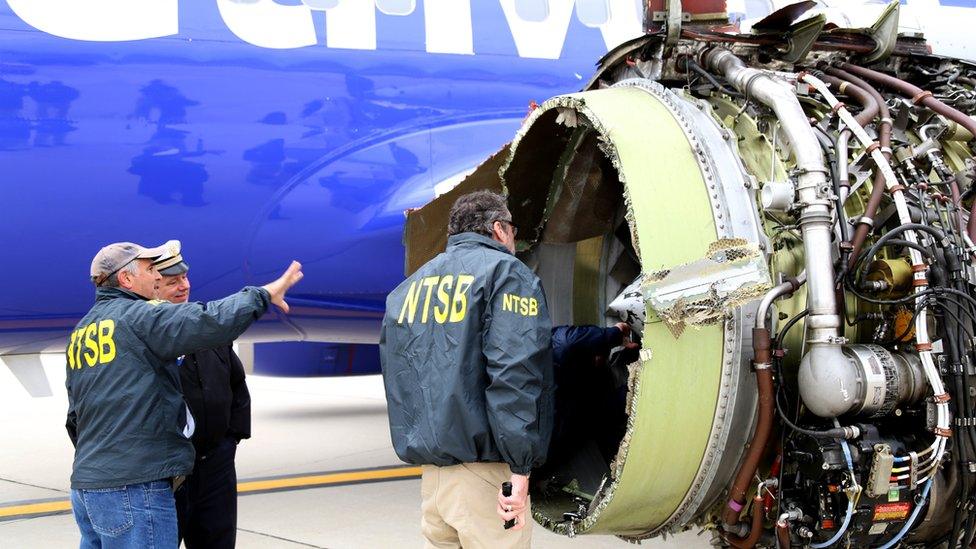
Hundreds of CFM56-7B engines will be checked worldwide
US and European aviation authorities have ordered emergency inspections of jet engines similar to the one involved in a fatal accident earlier this week.
A female passenger died after she was nearly sucked from the cabin of a Southwest Airlines flight en route from New York to Dallas on Tuesday.
Investigators say there was a fault with the engine's fan blades.
Almost 700 Boeing 737 engines will need to be inspected worldwide over the next 20 days, regulators say.
"Fan blade failure due to cracking... could result in an engine in-flight shutdown, uncontained release of debris, [and] possible airplane decompression," the US Federal Aviation Administration (FAA) said in a statement announcing the inspections.
Fan blades that have undergone a certain number of flights will be given ultrasonic tests, they added.
Allow X content?
This article contains content provided by X. We ask for your permission before anything is loaded, as they may be using cookies and other technologies. You may want to read X’s cookie policy, external and privacy policy, external before accepting. To view this content choose ‘accept and continue’.
Southwest Airlines Flight 1380, a Boeing 737 which was carrying 149 people, was forced to make an emergency landing at Philadelphia airport following a fault with one of its CFM56-7B engines.
An initial investigation found evidence of metal fatigue where a fan blade had broken off, according to the US National Transportation Safety Board (NTSB).
The CFM56-7B engine is in use on more than 8,000 Boeing 737 planes worldwide, the manufacturer says.
What have investigators said?
NTSB chairman Robert Sumwalt told reporters that a fan blade had broken off due to metal fatigue and that a second fracture had been recorded about halfway along its length.
He could not say if the incident indicated a fleet-wide issue with the Boeing 737-700.
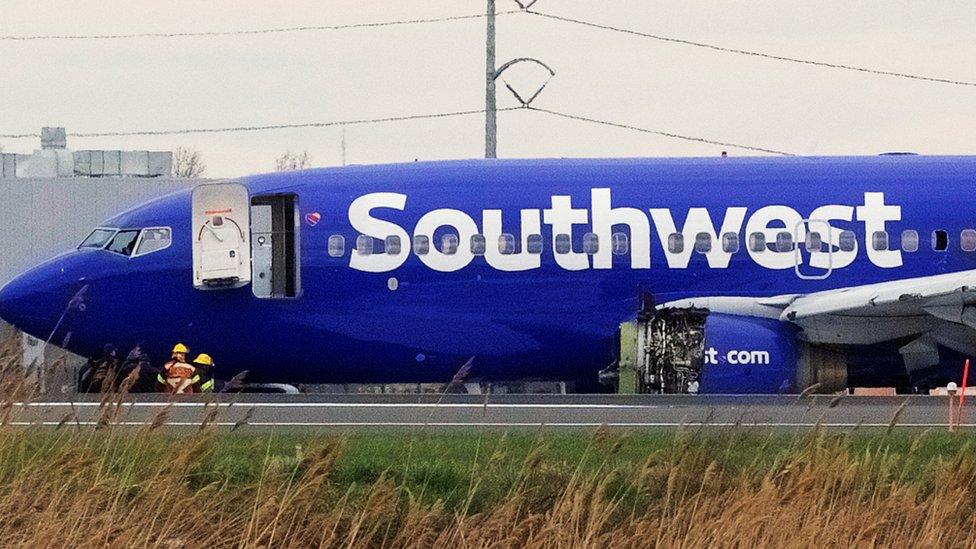
The airliner made an emergency landing at Philadelphia International Airport
Mr Sumwalt also said a casing on the engine was meant to contain any parts that come loose but, due to the speed at impact, the metal was able to penetrate the shell.
The FAA did not say how many engines would be inspected. It said that any fan blades that failed the inspection would have to be replaced.
Debris ripped a hole more than a foot long in the fuselage of the jet above the left wing, causing cabin decompression. An investigation into that incident also found signs of metal fatigue, according to the NTSB.

Related aviation stories:

Who was the victim?

Jennifer Riordan is the first passenger to die in an accident on a US commercial airliner since 2009
Jennifer Riordan was a 43-year-old mother-of-two and executive for Wells Fargo bank in Albuquerque, New Mexico.
Shrapnel from the shredded engine smashed the window next to her causing rapid decompression in the cabin that nearly blasted her out of the jet.
Other passengers pulled her back in and tried to revive her but she died from her injuries.
Philadelphia's medical examiner said on Wednesday that Ms Riordan had died of blunt impact trauma to her head, neck and torso.
Seven other passengers were slightly injured.
Ms Riordan was the first passenger to die in an accident on a US commercial airliner since 2009.
How did the drama unfold?
Air traffic control: "I'm sorry, you said there is a hole?"
About 20 minutes after the twin-engine Boeing 737 took off, shrapnel pierced the passenger compartment causing the plane to lose pressure and rapidly descend.
With oxygen masks over their mouths, passengers screamed and braced for impact.
For a few seconds, the aircraft rolled to an angle of 41 degrees before levelling out and starting an emergency descent, federal investigators said on Wednesday.
"Southwest 1380, we're single engine," the pilot radioed to air traffic control.
"We have part of the aircraft missing so we're going to need to slow down a bit," she said, adding that some passengers had been hurt.
"Injured passengers, okay, and is your airplane physically on fire?" asks a male voice in the tower, according to a recording released by officials.
"No, it's not on fire, but part of it's missing," the pilot, Capt Tammie Jo Shults, replies.
"They said there's a hole, and uh, someone went out," she calmly adds.
- Published19 April 2018
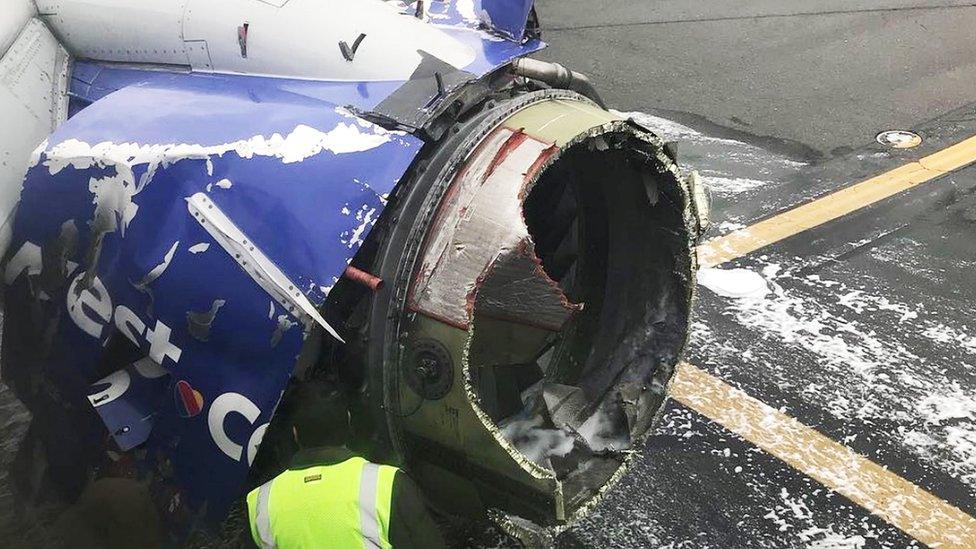
- Published19 April 2018
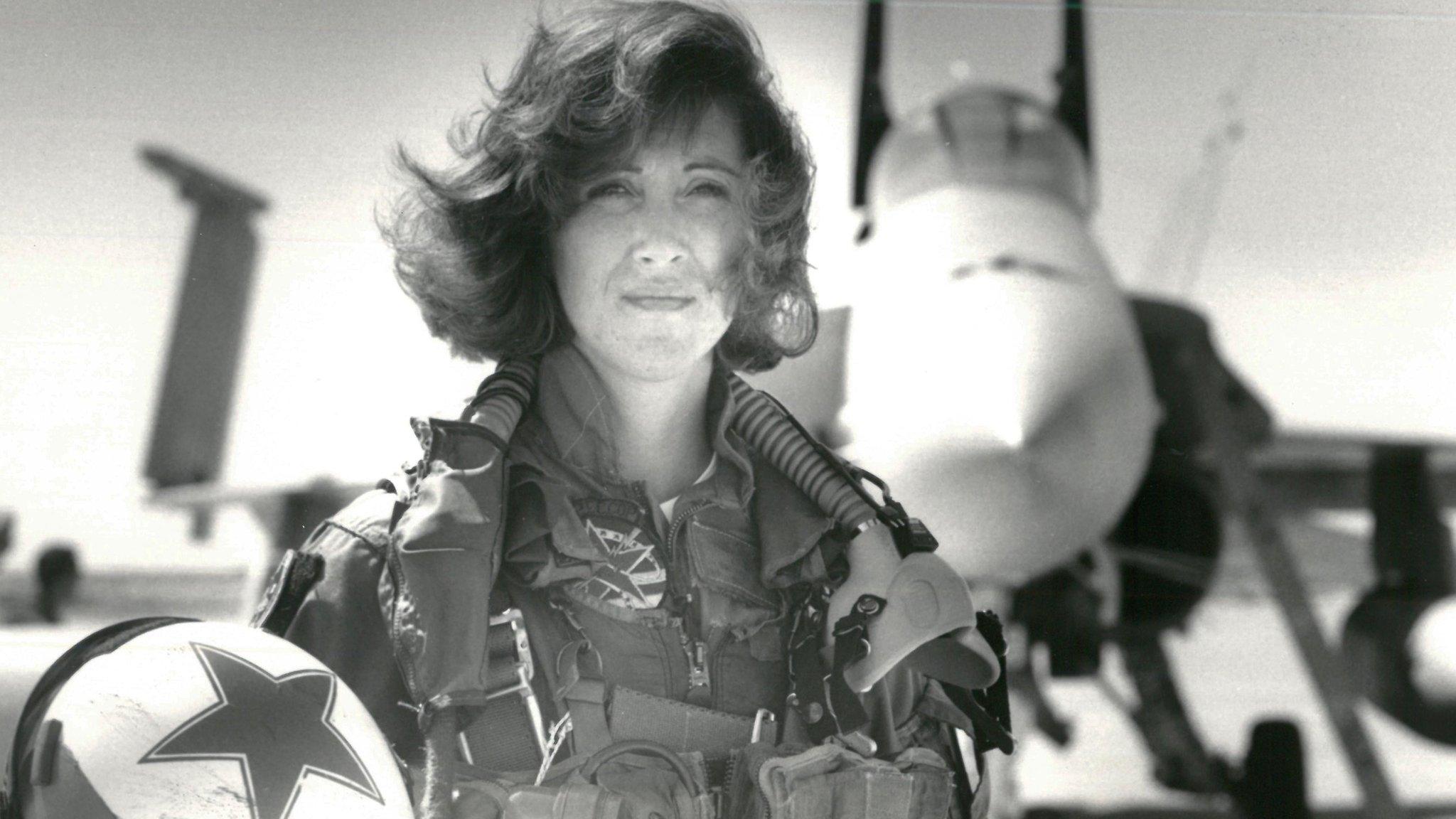
- Published18 April 2018
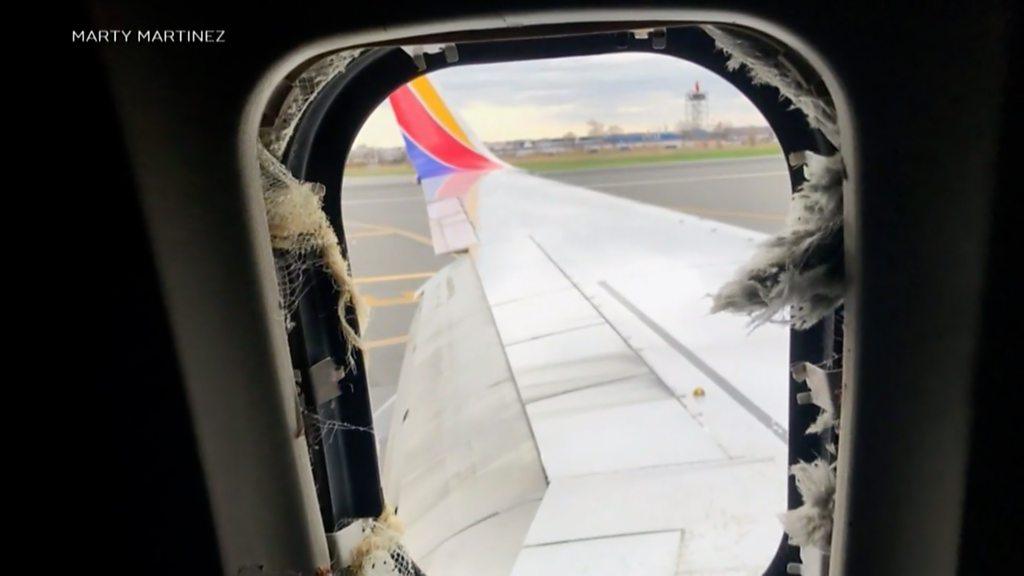
- Published18 April 2018
